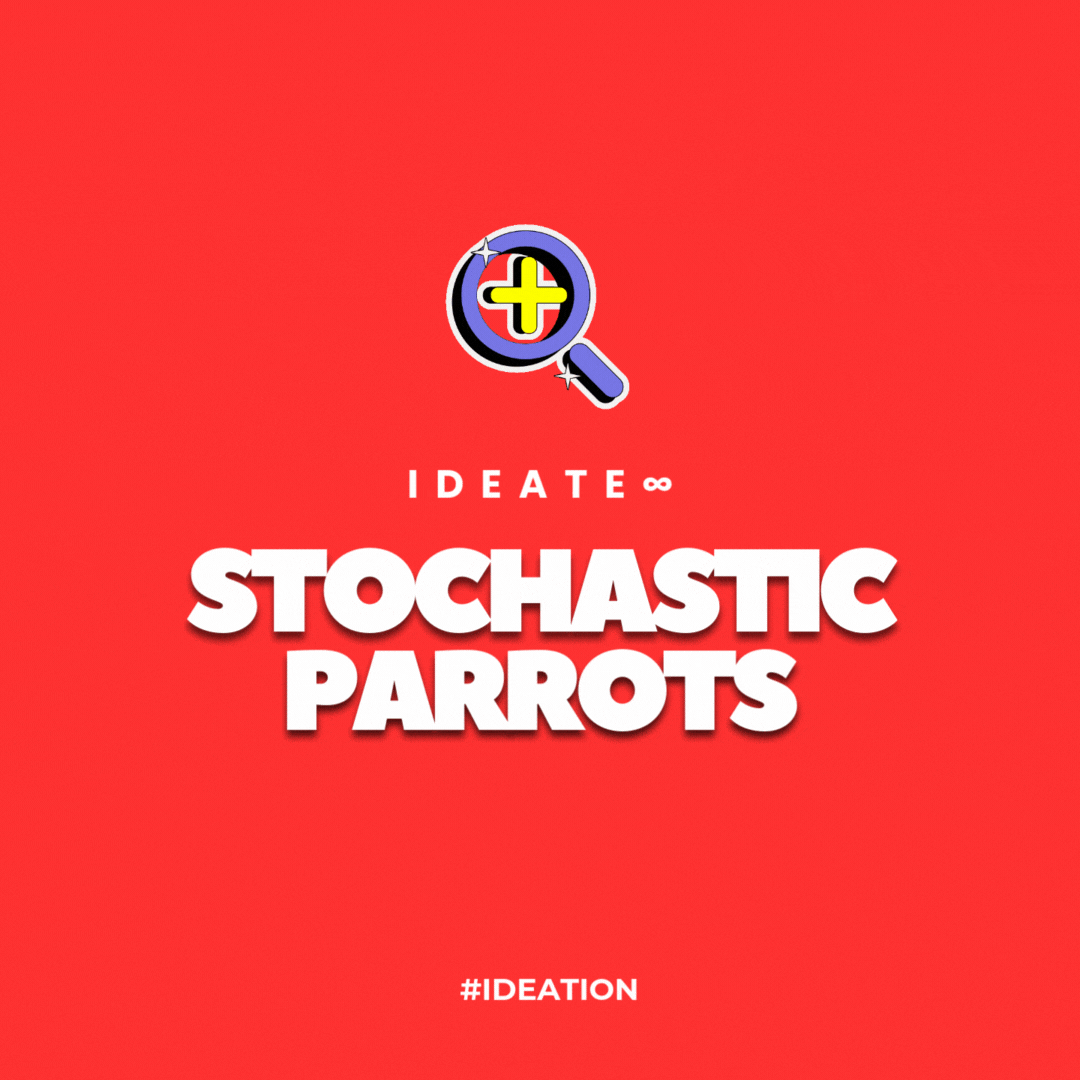Stochastic Parrots in Innovation: Harnessing AI Hallucinations for Creative Breakthroughs
Introduction
As generative AI becomes a fixture in corporate innovation programs, it brings both power and paradox. These models can process vast information, generate novel ideas, and automate creativity. But they’re also prone to hallucinations—producing confident answers that are false, illogical, or disconnected from reality.
To most, this is a bug.
At Hangar 75, we sometimes treat it as a feature.
Drawing from the now-famous critique by Emily Bender and colleagues—who described large language models (LLMs) as “stochastic parrots”—we use these AI hallucinations in a deliberate and structured way to provoke unexpected insights.
Within IDEATE∞, Stochastic Parrot Ideation is part of our most controversial suite: a set of tools designed to uncover ideas not despite AI errors—but because of them.
What Are Stochastic Parrots and AI Hallucinations?
The term stochastic parrot refers to how LLMs generate text based on statistical patterns from their training data—without actual comprehension. This can lead to hallucinations: convincing, but fabricated or irrational outputs.
While problematic in factual or regulatory contexts, these hallucinations can be surprisingly useful in creative ideation—producing ideas unshackled from logic, bias, or precedent.
Think of it as algorithmic surrealism—not to be trusted, but to be explored.
Why This Technique Matters in Corporate Innovation
Traditional innovation models emphasize validity, feasibility, and logic. But these same filters can block breakthrough thinking—especially when teams default to what’s safe or what’s been done before.
By leveraging AI hallucinations intentionally, corporate innovators can:
Surface non-obvious idea combinations
Break out of linear thought
Reveal overlooked assumptions
Trigger reframing and debate
Access “sideways” inspiration
In essence, hallucinations become ideation fuel, not noise.
Pros of Stochastic Parrot Ideation
Provocative Outputs: Generates unexpected combinations and scenarios
Bias Breaker: Escapes human pattern bias by following novel data paths
Volume and Speed: Produces thousands of provocations in minutes
Great for Reframing: Sparks reflection on the boundaries of feasibility
Fuels Divergence: Ideal for early-stage creativity and white-space exploration
Cons of Stochastic Parrot Ideation
Factually Unreliable: Should never be used for data accuracy or validation
Needs Curation: Many outputs will be unusable or irrelevant
Risk of Misinformation: Can introduce confusion if not clearly framed as fictional
Limited Depth: May miss nuance or strategy without human enrichment
Cultural Sensitivity Required: Hallucinated content may stray into inappropriate territory
Illustrative Example: Exploring New Revenue Streams in Luxury Retail
A European luxury fashion house was exploring new monetization models. Prior workshops had yielded predictable ideas: memberships, limited editions, and digital drops.
Within IDEATE∞, we ran a Stochastic Parrot prompt set, asking:
“What new services might this brand offer in a future where luxury is non-material?”
Among the hallucinated responses:
“Emotion-based NFTs that change daily based on the customer’s mood.”
“Scent-based digital currencies.”
“A time rental program for exclusivity — you can be seen wearing it, but never own it.”
“Reverse resale marketplaces, where products increase in price as they degrade.”
While many ideas were implausible, several were reframed and refined—leading to a concept for a “luxury moments” subscription that monetized brand storytelling through immersive, ephemeral digital experiences.
Where Stochastic Parrot Ideation Fits Within the IDEATE∞ Platform
Within IDEATE∞, this technique is deployed via our Creative Divergence Engine, where users can toggle hallucination intensity to explore:
Fictional product ideas
Absurd customer segments
Future-of-work scenarios
Business models for hypothetical markets
Cross-category mashups (e.g., “banking x wellness x space travel”)
AI outputs are explicitly tagged as speculative, and users can enrich, reject, or reframe each idea with built-in workflows.
We often combine this with Provocation, Dark Horse Ideation, or Chaos-Driven Ideation to fuel breakthrough idea sets.
The Strategic Role of Stochastic Parrot Ideation in Innovation Portfolios
Best used when:
You need volume + variety in early-stage ideation
Teams are stuck in known solutions
You’re exploring future-state scenarios
You want to break industry echo chambers
You’re developing concept art, design fiction, or speculative roadmaps
Avoid using it:
For technical or regulatory workstreams
Without clear framing as “experimental”
In customer-facing outputs without curation
Final Thoughts: When Machines Dream, Humans Rethink
AI hallucinations can’t be trusted—but they can be used. The trick is knowing how.
At Hangar 75, we don’t fear the “stochastic parrot”—we train it to sing something surprising. Inside IDEATE∞, we harness AI’s flaws to break our own habits, challenge assumptions, and spark ideas that logic alone would never allow.
Ready to Unlock Transformational Ideas?
This is just one of the many powerful techniques embedded within IDEATE∞, Hangar 75’s enterprise-grade ideation engine. Whether you’re launching a new product, solving complex challenges, or evolving your innovation strategy, IDEATE∞ helps you generate, enrich, and prioritize high-impact ideas—fast.
👉 Explore how IDEATE∞ can be deployed inside your organization.
Schedule a no-risk, personalized demo and discover precisely how IDEATE∞ can drive strategic advantage for your organization.

